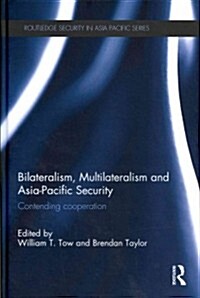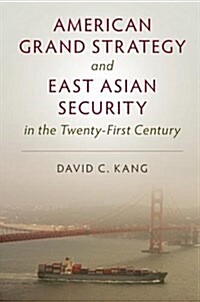
Bilateralism, multilateralism and Asia-Pacific security: contending cooperation
- 발행사항
- New York : London ; Routledge, 2013
- 형태사항
- xvi, 218 p. ; 24cm
- ISBN
- 9780415625807
- 청구기호
- 390.03301 T737b
- 서지주기
- Includes bibliographical references (p. [193]-213) and index
소장정보
| 위치 | 등록번호 | 청구기호 / 출력 | 상태 | 반납예정일 |
|---|---|---|---|---|
이용 가능 (1) | ||||
| 1자료실 | 00014521 | 대출가능 | - | |
- 등록번호
- 00014521
- 상태/반납예정일
- 대출가능
- -
- 위치/청구기호(출력)
- 1자료실
책 소개
Many scholars of international relations in Asia regard bilateralism and multilateralism as alternative and mutually exclusive approaches to security co-operation. They argue that multilateral associations such as ASEAN will eventually replace the system of bilateral alliances which were the predominant form of U.S. security co-operation with Asia-Pacific allies during the Cold War. Yet these bilateral alliances continue to be the primary means of the United States’ strategic engagement with the region. This book contends that bilateralism and multilateralism are not mutually exclusive, and that bilateralism is likely to continue strong even as multilateralism strengthens. It explores a wide range of issues connected with this question. It discusses how US bilateral alliances have been reinvigorated in recent years, examines how bilateral and multilateral approaches to specific problems can work alongside each other, and concludes by considering how patterns of international security are likely to develop in the region in future.
Many scholars of international relations in Asia regard bilateralism and multilateralism as alternative and mutually exclusive approaches to security co-operation in the region, arguing that eventually multilateral associations such as ASEAN will in time replace the system of bilateral alliances which were the predominant form of security co-operation in Cold War times and which continue as the primary means of the United States’ engagement with the region, for example the US alliances with Japan and South Korea. This book contends, on the other hand, that bilateralism and multilateralism are not mutually exclusive, and that bilateralism is likely to continue strong even as multilateralism strengthens.
목차
Part 1: Setting the Context 1. Introduction William T. Tow and Brendan Taylor 2. Conceptualising the Bilateral-multilateral Nexus Brendan Taylor Part 2: The Nexus and America’s Asian Alliances 3. Bridging Alliances and Asia-Pacific Multilateralism Ajin Choi and William T. Tow 4. Stretching the Japan?US Alliance Rikki Kersten 5. The US?Philippines Alliance: Moving Beyond Bilateralism Renato De Castro 6. Thailand's Security Policy: Bilateralism or Multilateralism? Chulacheeb Chinwanno Part 3: The Nexus and Asian Multilateralism 7. The Role of the Five Power Defence Arrangements in the Southeast Asian Security Architecture Ralf Emmers 8. Territorial and Maritime Jurisdiction Disputes in East Asia: Comparing Bilateral and Multilateral Approaches Aileen SP Baviera 9. The Bilateral?Multilateral Nexus in Asia's Defence Diplomacy David Capie Part 4: The Nexus and Asian Security Order 10. The Rise of China and the Transformation of Asia-Pacific Security Architecture Ryo Sahashi 11. Alliances and Order in the "Asian Century" Hugh White 12. Conceptualizing the Relationship between Bilateral and Multilateral Security Approaches in East Asia: A Great Power Regional Order Framework Evelyn Goh 13. Conclusion William T. Tow




